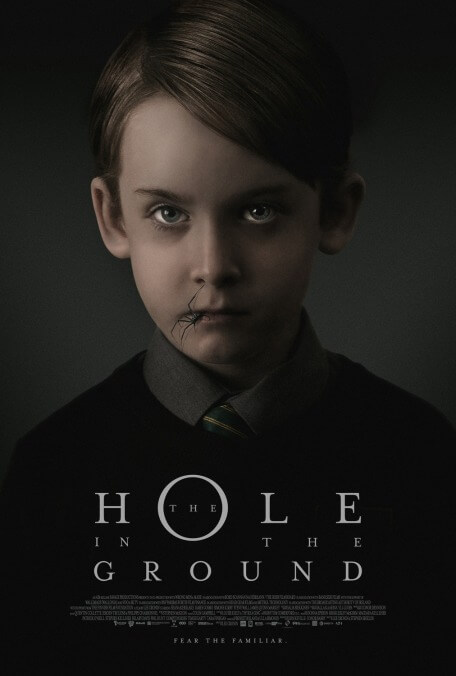The Hole In The Ground is spooky fun, until its big metaphor swallows the horror

Picture a hole in the ground. Got an image in your mind? That’s not big enough. The hole in the ground in The Hole In The Ground, an Irish horror film that premiered in Sundance’s midnight section last month, could swallow a mansion. Indeed, one might think that it had, were it not in the woods—an enormous, perfectly circular pit surrounded by tall trees right to the lip of its entire circumference, looking like what might happen if god accidentally dropped his bowling ball in that spot. It’s the sort of arresting, potentially hazardous geographical feature that would definitely be mentioned to someone moving into a house within walking distance, which makes it a bit odd when Sarah (Seána Kerslake), a single mother newly arrived in the area, unexpectedly stumbles onto—and nearly into—it while searching for her pre-teen son, Chris (James Quinn Markey). It soon becomes clear that nobody else in this rural village knows about the hole in the ground, and equally clear that The Hole In The Ground will appeal most to those who like their horror movies very bluntly metaphorical.
That’s not to say that director Lee Cronin, who also wrote the screenplay (with Stephen Shields), doesn’t know how to deliver surface-level shivers. The movie opens with a superbly creepy shot following Sarah’s Range Rover from overhead, in which the camera gradually turns upside down, making it briefly appear as if the car is driving straight downward into hell. And Cronin deftly escalates the tension as Sarah begins to notice something slightly different about Chris, immediately after he mysteriously disappears. There’s no particular indication that he fell or climbed into the sinkhole Sarah discovers while frantically searching for him—he just turns up back in his bedroom when she gets home, claiming never to have left—but his manner is subtly different, and he suddenly doesn’t remember the invented game he and Mum have always shared. What’s more, a freaky old woman (Aki Kaurismäki regular Kati Outinen), who’s reportedly never been the same since accidentally (?) killing her own child by hitting him with her car, hisses, “It’s not your son!” at Sarah. By the time Chris shoves a heavy wooden table across the room in an abrupt fit of anger, pinning Sarah to the wall, she seems inclined to agree.
Parental anxiety has long been fertile ground for horror, going back to The Bad Seed and The Exorcist, and The Hole In The Ground finds a somewhat fresh angle on the possessed-kid subgenre. Sarah sports an ugly wound on her forehead (usually hidden by her hair), and it’s strongly implied that Chris’ father, who’s never seen and rarely spoken of, physically abused her, precipitating her move to the middle of nowhere. For an hour or so, Cronin wisely lets Kerslake’s quivering, empathetic performance do the heavy lifting; every shot of Sarah staring nervously at Chris communicates her unconscious fear that half of the boy’s DNA comes from a violent man she had to escape, and that Chris might take after him. That’s rich subtext, but Cronin eventually decides that the time has come to dig it up—and he’s already got a convenient hole! The movie’s final third or so functions exclusively as metaphor, yet that metaphor becomes increasingly muddled (and literally muddy), pivoting on Sarah’s decision to stop taking her meds and culminating in a sequence that shows her literally clawing her way out of her psychological issues. This seems to be a growing trend: Under The Shadow suffered from a similarly misguided impulse to explain itself right in the narrative, and so did, to a lesser extent, The Babadook. Real-world relevance has more power in genre fare when the viewer registers it on a primal level, and a subtler movie tends to be scarier, too. It’s tricky business to process painstaking self-analysis and scream at the same time.